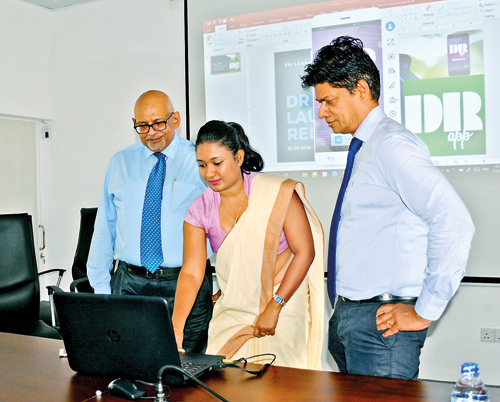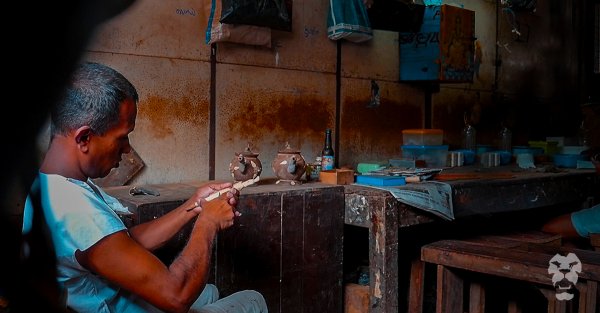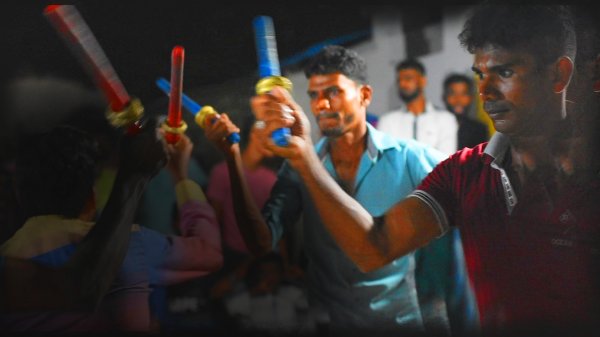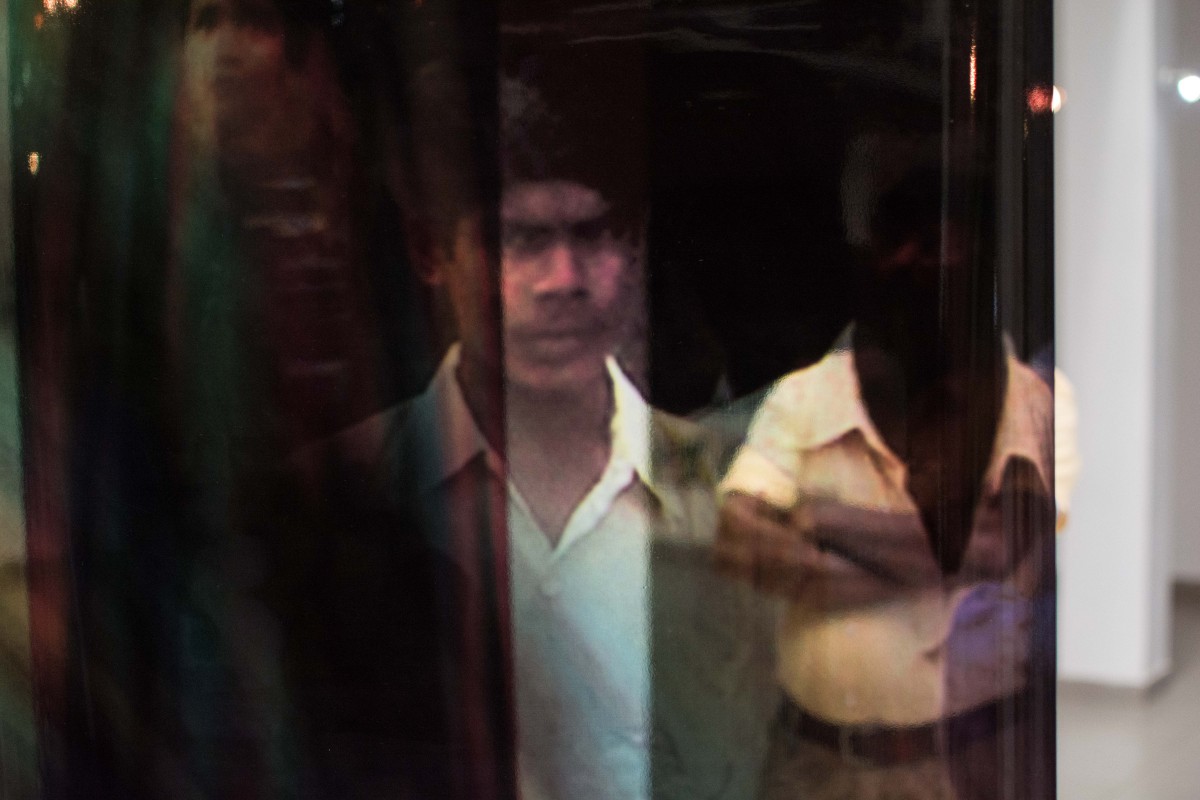
Nestled in a corner of the JDA Gallery in Colombo is a pile of crumpled newspaper. Standing over it is the evocative image of an eye, tears streaming down the length of the artwork. The piece, by Minal Naomi, titled ‘Do Not Take This For Granted’, investigates the role of print media in disseminating the death of her uncle, former Sunday Leader Editor, Lasantha Wickrematunge.
As Naomi notes, “the idea is to highlight how the machine he used to disseminate information to the broader public became the very same machine that broadcasted his murder in a sensational manner.” This ‘double-edged sword’ is portrayed with the image of a double-nibbed fountain pen, highlighting the importance of using the right to freedom of expression responsibly.
Naomi’s piece is one of dozens on exhibit at the first ever Human Rights Arts Festival 2017 in Colombo, organised by the Arts Council of Sri Lanka in collaboration with the Human Rights Council of Sri Lanka, with support from The Workshop Players and the Saskia Fernando Gallery, among others.
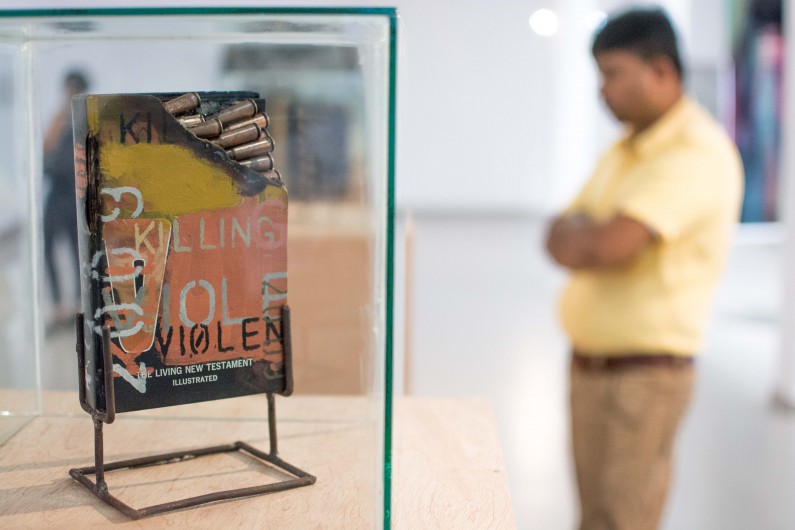
‘Killing Book’ by Kingsley Gunatillake
Curated by Chandragupta Thenuwara, the exhibition showcases many names known to Colombo, such as Anoma Wijewardene, Gayan Prageeth, and Muvindu Binoy, among others. The work of lesser known artists such as Jasmine Nilani Joseph, Somasundaram Hanusha, and Pakkiyarajah Pushpakanthan from the North and East are also on display, as is the work of artists from Scotland and England.
Taking centre stage on the ground floor is an installation by Anoma Wijewardene created in 2009, at the end of the war. Part of the collection ‘Phoenix’, ‘I Hear Those Voices That Will Not Be Drowned’ takes the form of seven panels, each alluding to displaced persons—the collateral damage of over 26 years of civil war.
“In 2017, we are yet again at a critical juncture—at the precipice of squandering away another chance to achieve progressive change and lasting peace. Entrenching progressive change requires brave and difficult decisions; it requires leaders to be courageous and principled, and citizens to be socially conscious and responsible,” she notes.
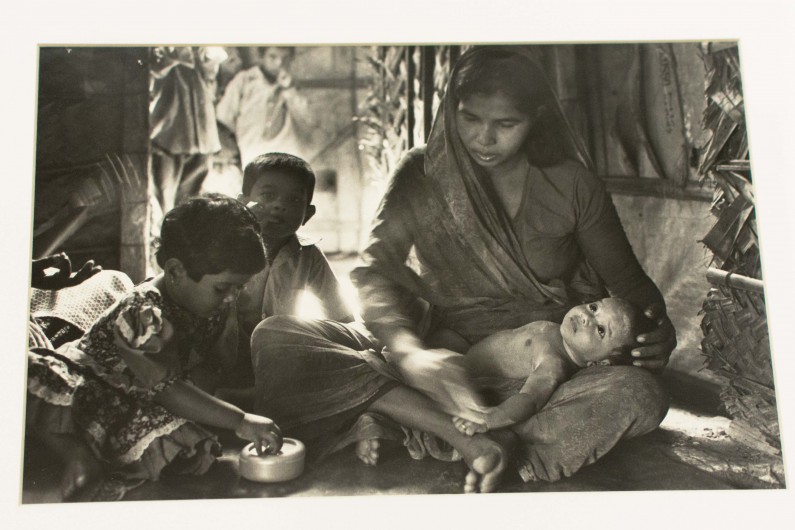
‘The Story of an ‘Assignment’’ by Menika Van Der Poorten
Menika Van Der Poorten recounts a failed assignment, one commissioned by the UNHCR in 2002. “In 1990, the Liberation Tigers of Tamil Eelam (the LTTE) embarked on a campaign to evict the Muslim population out of the then LTTE-controlled areas of Mullaitivu, Mannar, and Jaffna,” she writes.
“In 2002, the UNHCR commissioned me to photograph and record the stories of the displacement of Muslim women…the communities were very enthused about the project in the expectation that, finally, their experiences and their narrative of the events of 1990 would be made public…”
“We collected hours of recordings and photographs which we handed over the UNHCR…in the expectation that there would be a life for the documentation beyond the exhibition…sadly only a few of the tapes were translated and/ or transcribed and what transcriptions there were are now no more, supposedly ‘lost’ by the UNHCR.”
The series of black and white photographs, the few copies that Menika managed to save before handing over the project material to the UNHCR, capture with poignancy moments from the lives of the displaced Muslim women. In one, a woman tends to her children in a cadjan hut, in the other, two young women share a moment of fraternity in a bleak landscape.
Menika’s photographs suggest themes of grim resilience in the face of darkness. Particularly striking is the image of a lone woman standing against the light, on her face the unwritten story of loss.
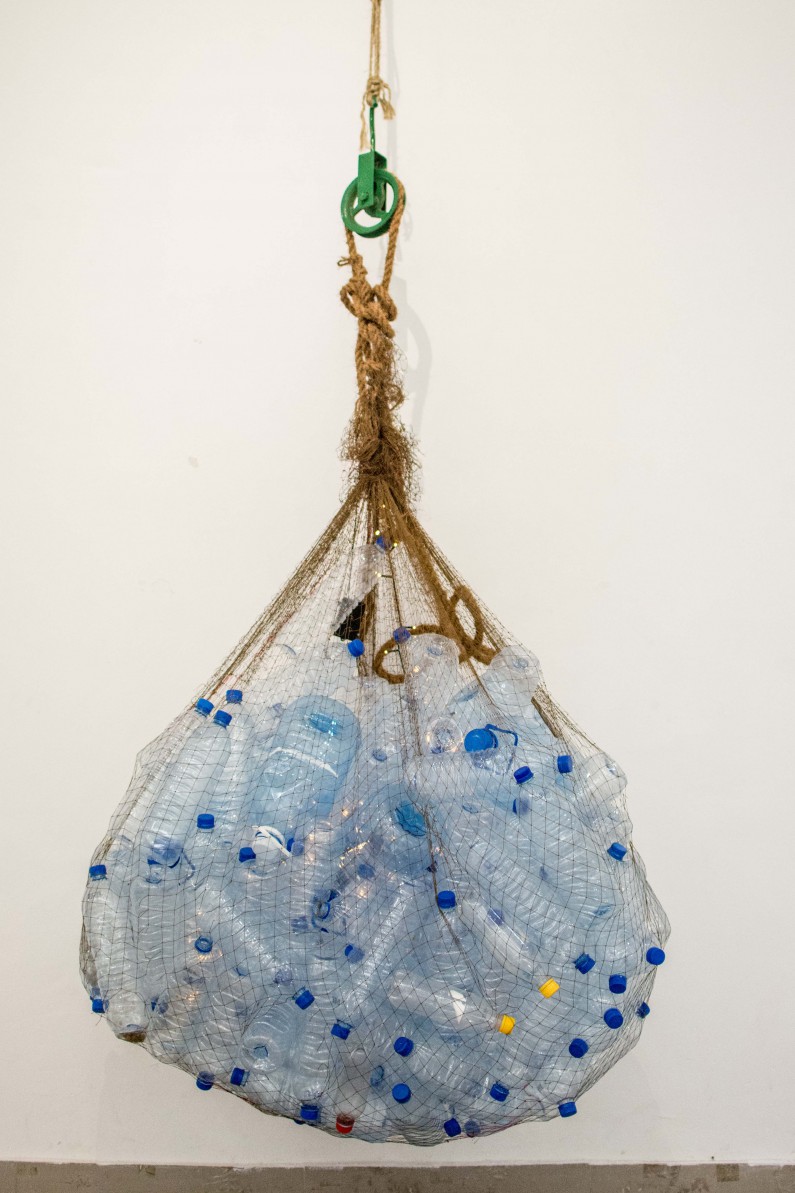
Blind Eye by Flick Ferdinando
The silhouette of children in a tenement building, the face of a woman hidden from view, the knotty leg of a crippled street vendor. Abdul Halik Azeez’s ‘Invisible People’ shines the light on those left behind in the global drive for development.
A central motif in Azeez’s work is the absence of a recognizable face, signalling the ‘invisibility’ of the subjects captured. Azeez argues that the current economic system is geared to favour the privileged and fittest, leaving a stratum overlooked and forgotten.
He faults the international discourse on human rights for focusing more on the obvious aspects of deprivation rather than the lesser obvious, but as important, issue of an economic system that sustains income inequality. He questions if traditional human rights discourse is partner to an oppressive economic system.

‘Thatti’, or Bamboo Blinds by Firi Rahman
Other artists contemplate variant aspects of the social fabric we live in, within the framework on human rights. Somasundaram Hanusha’s piece ‘Labour’ was made of used tea bags through which the shadow of a tea-plucker emerged, while Nirosha Wanigasuriya’s ‘Domestic Violence’ was depicted through a series of broken dishes.
Speaking to Roar, Human Rights Festival 2017 curator Chandragupta Thenuwara said he was keen on tying art to socially conscious themes. “I am a very politically and socially conscious artist, and as the President of the Arts Council, I wanted to make sure we did something that raises awareness among the public,” he said.
He referred to when the issue of human rights was taken up by the European Union before Sri Lanka regained GSP+ tariff concessions in May, and said, “People were suspicious about human rights. They think it is a European or Western thing, but it is not. It is something enshrined with the people.”
He said human rights must not be constrained to the discourse of politicians or the government. “People must know these are our rights—and must fight for them,” he emphasised, promising to hold an exhibition on a larger scale the next time to facilitate deeper engagement.
The exhibition is thought provoking, opening up avenues for conversation on social issues ranging from the pervasive nature of plastics to age-old customs restricting women from the crucial capacity for independence. It also explores and examines the role of art in stimulating social consciousness.

